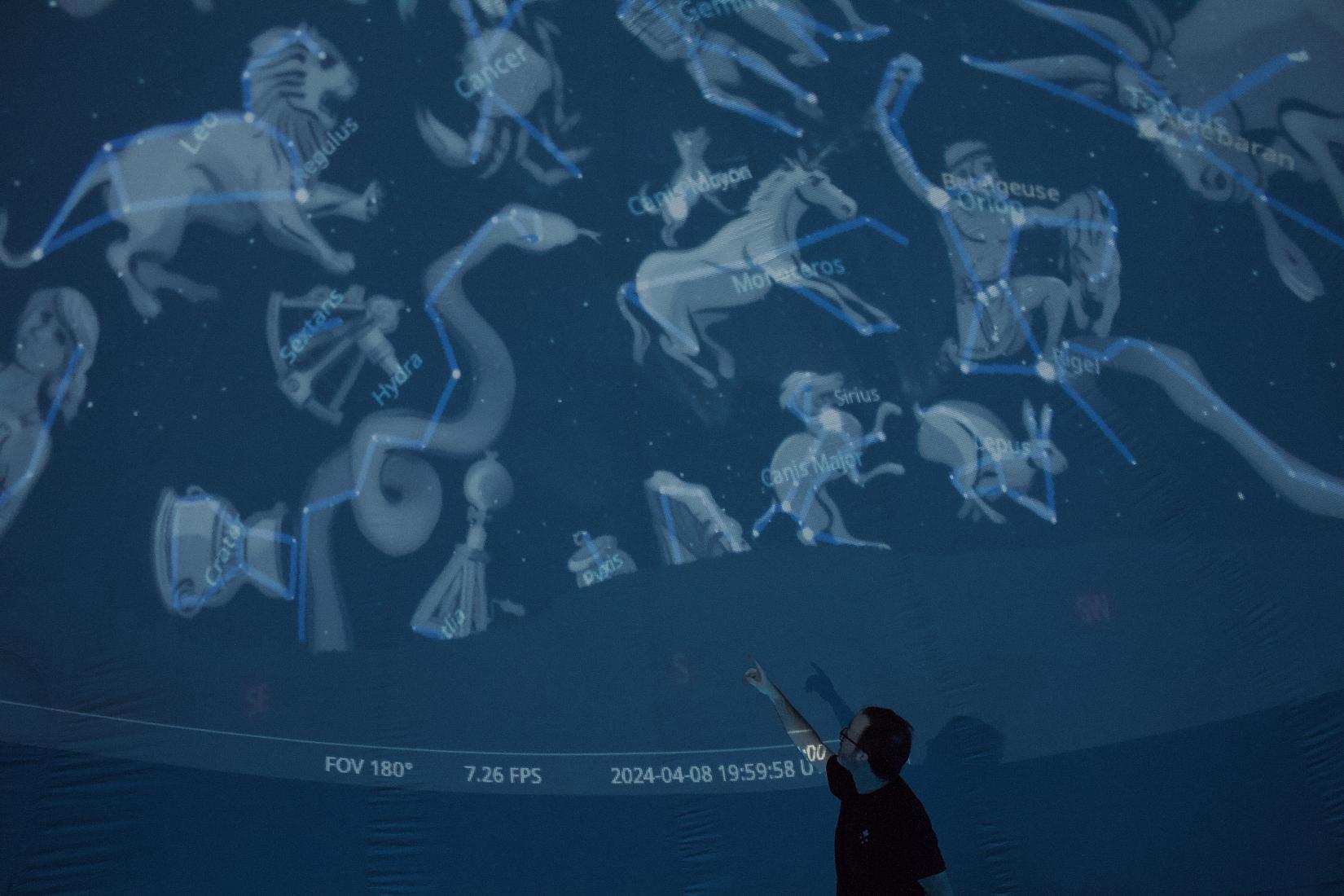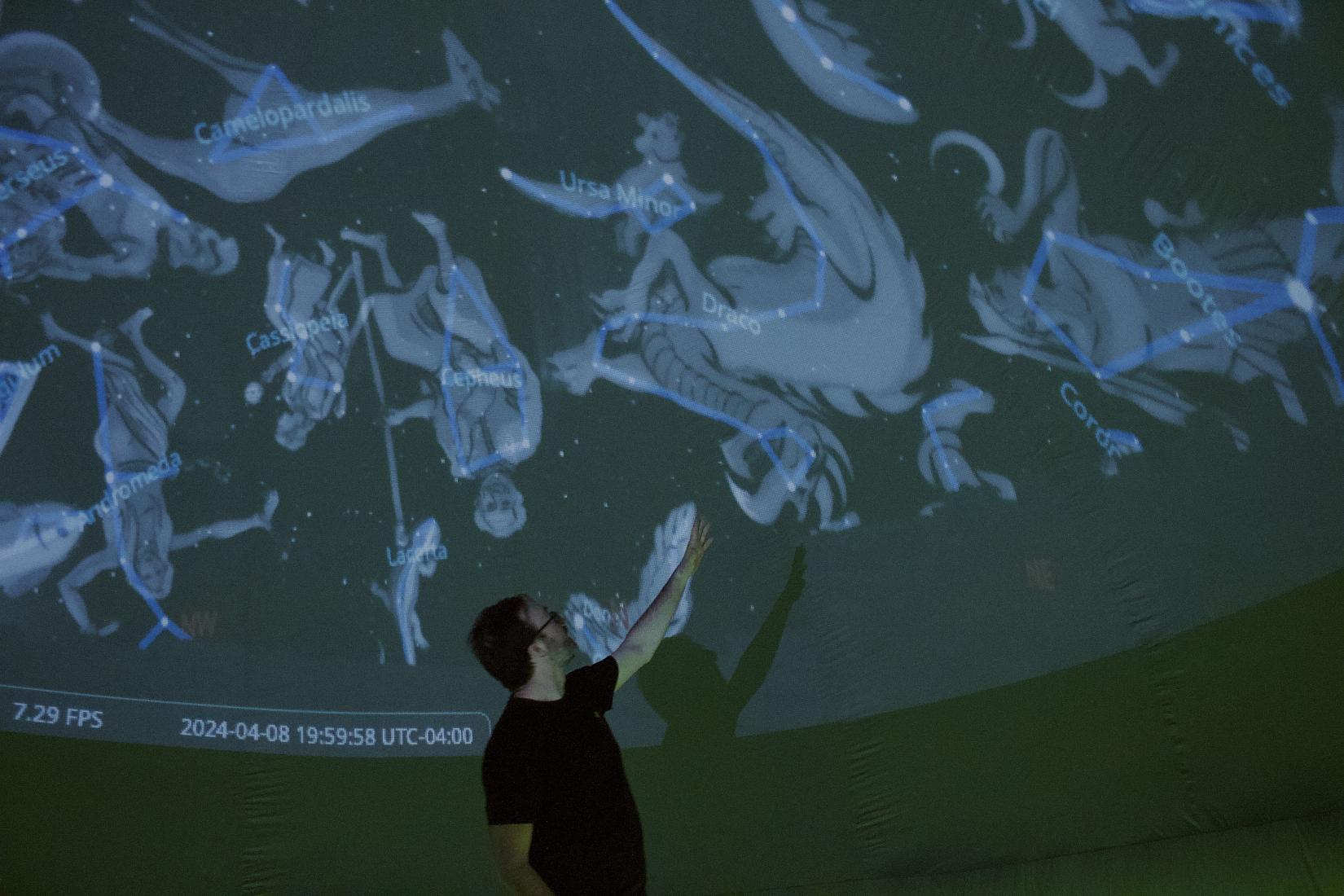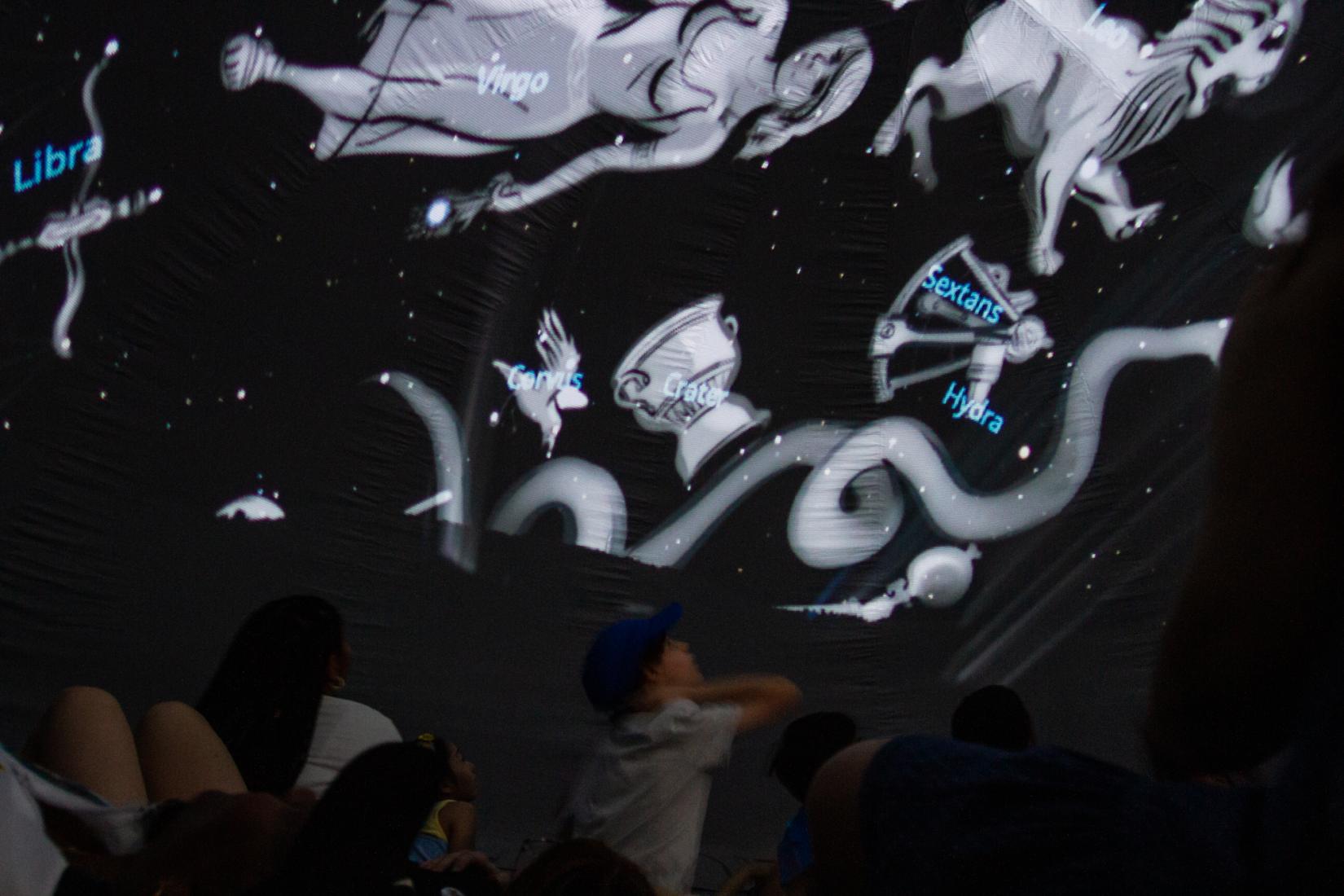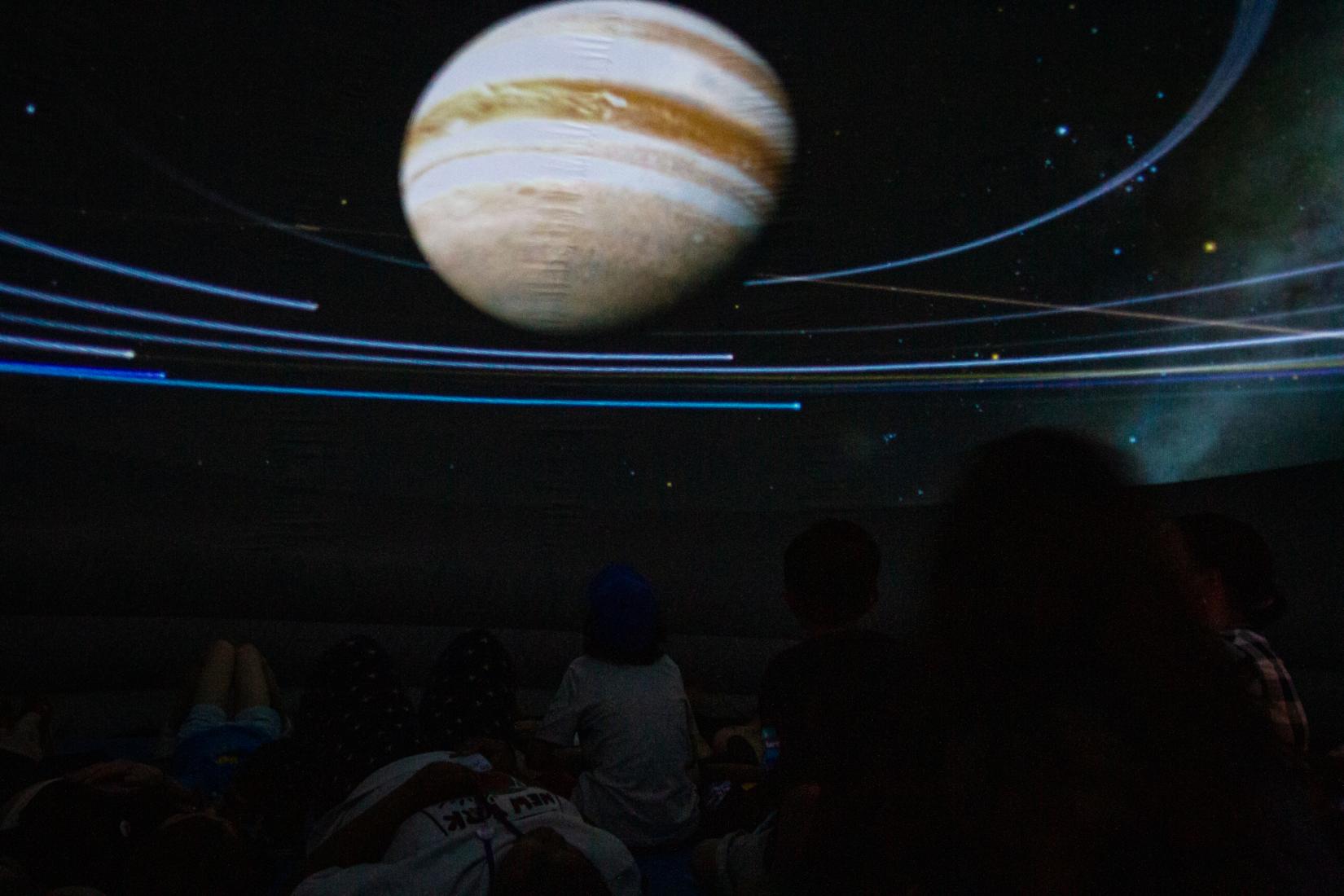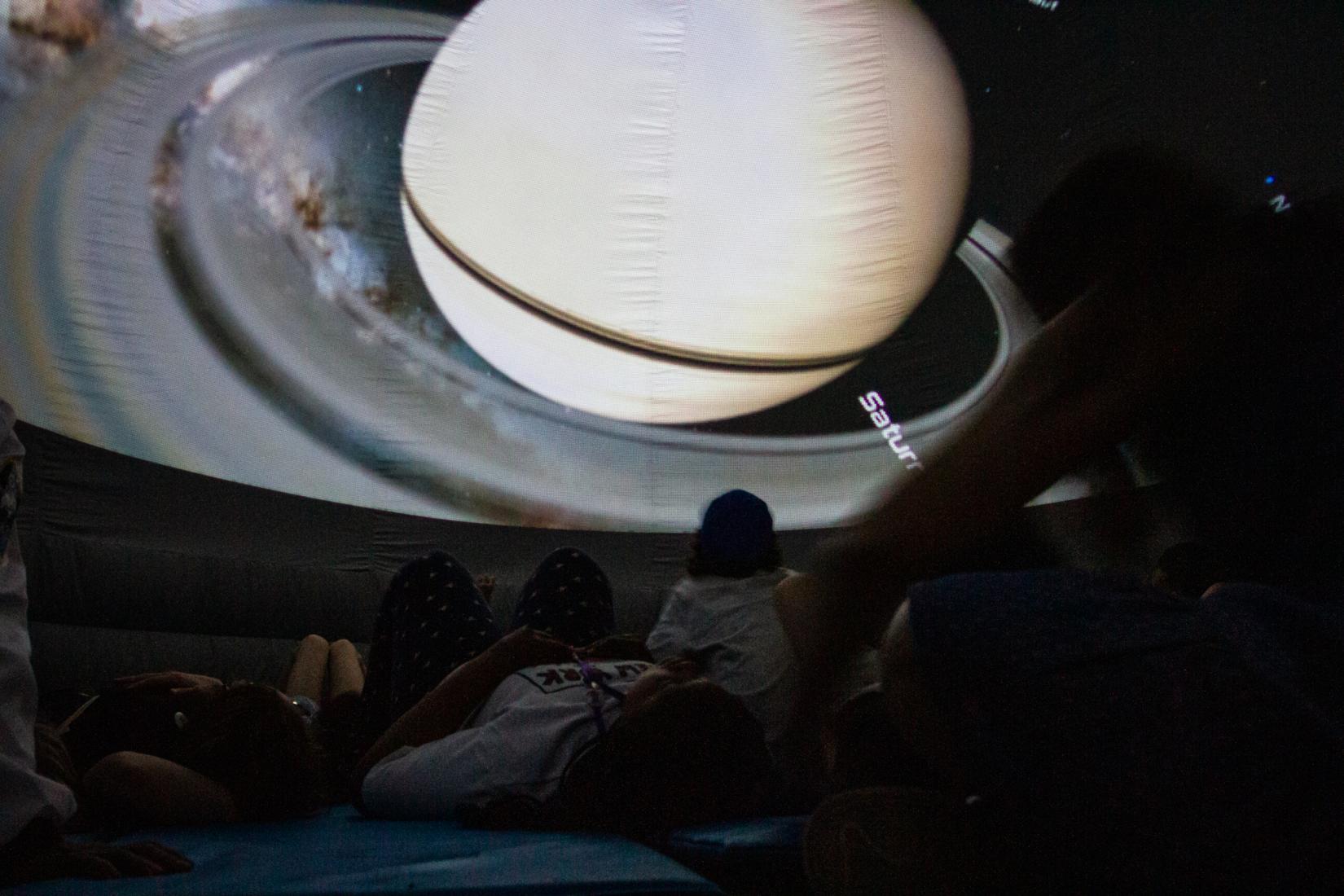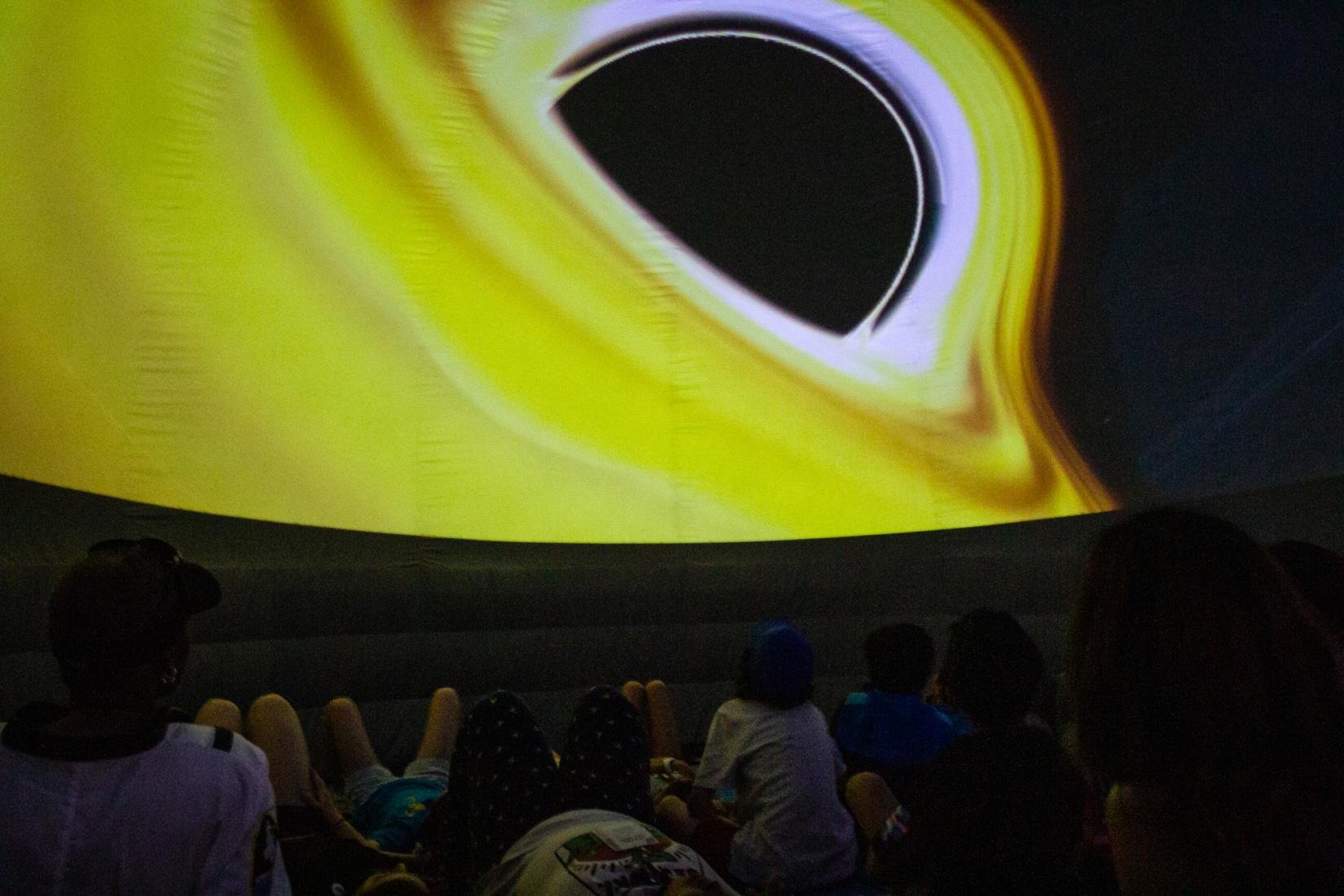Intro to the Sky and the Solar System
A 25-minute tour of the night sky and the Solar System in a mobile planetarium
A beautiful intro to the stars and the Solar System
Adapted to all age levels, we'll see the stars and constellations in the night sky. Then we'll fly on up into space and take a tour of the Earth, Moon, Sun, and planets in our Solar System.
Show Outline
This show is designed to last 25 minutes. It can be adapted for different grade levels
- students enter the dome and see a daytime sky
- the Earth rotates, the Sun sets, and the stars begin to appear
- some of these stars appear to make shapes: constellations
- children are encouraged to point out the constellations that they have heard of
- we take a rocket up into space and see the Earth as the astronauts do
- we tour the Solar System – the Moon, the Sun, and the planets – learning about the uniqueness of each along the way
- we zoom out to see our galaxy, the Milky Way
- we return back home to Earth to see the stars, then the sunrise as the dome lights up again
- students exit the dome
Curriculum Connections
Science and Technology
Earth and Space
D. Systems and interaction
- 1. Light and shadow
- a. Describes the influence of the apparent position of the sun on the length of
shadows
- a. Describes the influence of the apparent position of the sun on the length of
- 2. System involving the sun, the Earth and the moon
- a. Associates the sun with the idea of a star, the Earth with the idea of a planet
and the moon with the idea a natural satellite
- a. Associates the sun with the idea of a star, the Earth with the idea of a planet
Science and Technology
Material World
A. Matter
- 1. Properties and characteristics of matter
- e. Describes the shape, colour and texture of an object or a substance
- Distinguishes between the mass (quantity of matter) of an object and its weight (gravitational force acting on the mass)
B. Energy
- 1. Forms of energy
- a. Describes different forms of energy (mechanical, electrical, light, chemical, heat, sound, nuclear)
- b. Identifies sources of energy in his/her environment (e.g. moving water, chemical reaction in a battery, sunlight)
Earth and Space
B. Energy
- 1. Sources of energy
- a. Explains that the sun is the main source of energy on Earth
C. Forces and motion
- 1. Rotation of the Earth
- a. Associates the cycle of day and night with the rotation of the Earth
D. Systems and interaction
- 2. System involving the sun, the Earth and the moon
- b. Describes the rotational and revolutionary motion of the Earth and the moon
- c. Illustrates the phases of the lunar cycle (full moon, new moon, first and last quarters)
- d. Illustrates the formation of eclipses (lunar, solar)
Science and Technology
Earth and Space
D. Systems and interaction
- 3. Solar system
- a. Recognizes the main components of the solar system (sun, planets, natural satellites)
- b. Describes the characteristics of the main components of the solar system (e.g. composition, size, orbit, temperature)
Science and Technology
Earth and Space
C. Astronomical phenomena
- 1. Concepts related to astronomy
- a. Universal Gravitation
- i. Defines gravitation as a force of mutual attraction between bodies
- c. Light
- i. Defines light as a form of radiant energy
- ii . Describes properties of light (propagation in a straight line, diffuse reflection by surfaces)
- iii. Explains different phenomena using the properties of light (cycles of day and night, seasons, phases of the Moon, eclipses)
- a. Universal Gravitation
- 2. Solar system
- a. Characteristics of the solar system
- i. Compares some of the characteristics of the planets in our solar system (e.g. distances, relative size, composition)
- b. Cycles of day and night
- i. Explains the alternation of day and night in terms of the Earth's rotation
- c. Phases of the Moon
- i. Explains the phases of the lunar cycle
- d. Eclipses
- i. Explains a lunar or solar eclipse
- a. Characteristics of the solar system
Science and Technology
Earth and Space
C. Astronomical phenomena
- 1. Concepts related to astronomy
- b. Earth-Moonsystem
- i. Describes the tides in terms of the gravitational effect of the Earth-Moon system
- d. Solar energy flow
- Describes the main factors that affect the quantity of solar energy that reaches the Earth's surface (e.g. reflection and absorption of solar energy by the atmosphere or surfaces)
- b. Earth-Moonsystem
